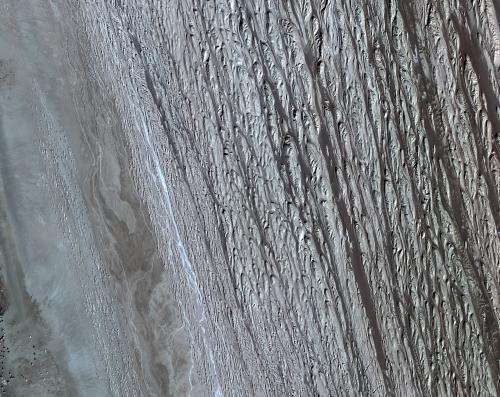Image: Dasht-e Lut desert detail from orbit

Wind-carved ridges and furrows in southeast Iran's Dasht-e Lut salt desert are pictured in this satellite image.
The desert is often called the 'hottest place on Earth' as satellites measured record surface temperatures there for several years. The highest land surface temperature ever recorded was in the Lut Desert in 2005 at 70.7ºC, as measured by NASA's Aqua satellite.
The region is generally considered an abiotic zone – meaning that even bacteria cannot survive here, let alone plants and animals. Some reports claim that research groups brought sterilised milk to the desert and left it uncovered in the shade, but the milk remained sterile.
The area pictured is surrounded by salt flats, visible on the left side of the image. The ridges dominating the image extend about 125 km.
This image was acquired by Korea's Kompsat-2 satellite on 4 November 2011.
ESA supports Kompsat as a Third Party Mission, meaning it uses its ground infrastructure and expertise to acquire, process and distribute data to users.
Provided by European Space Agency




















